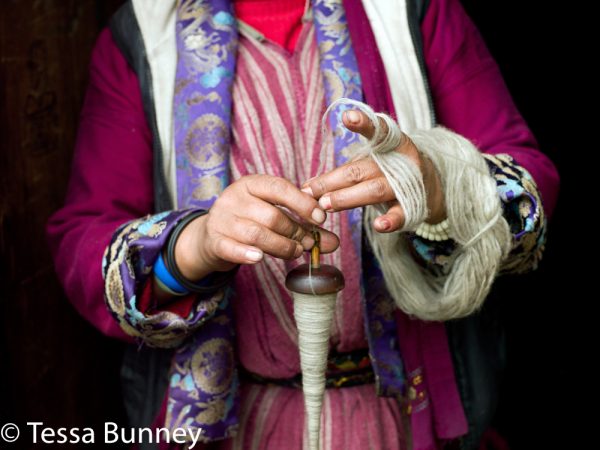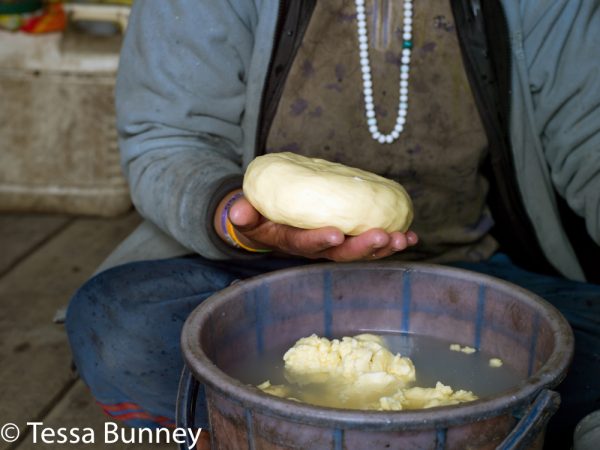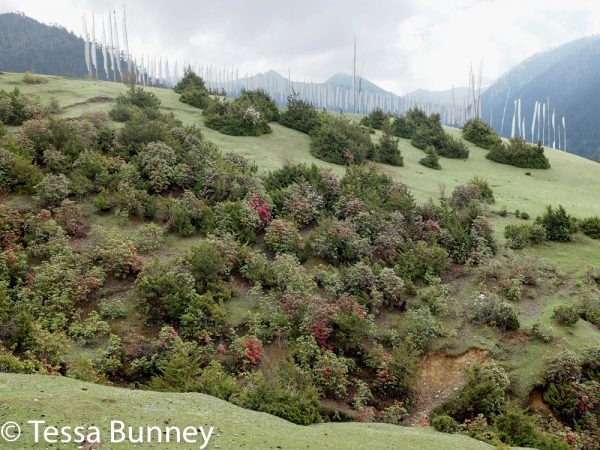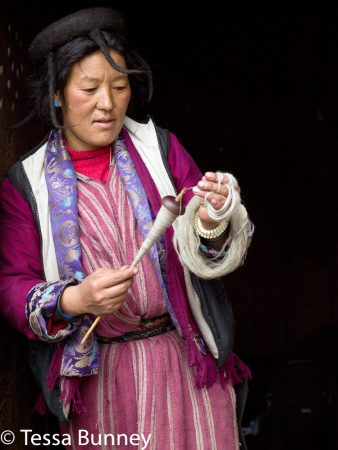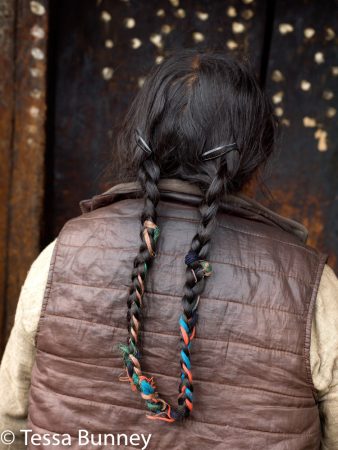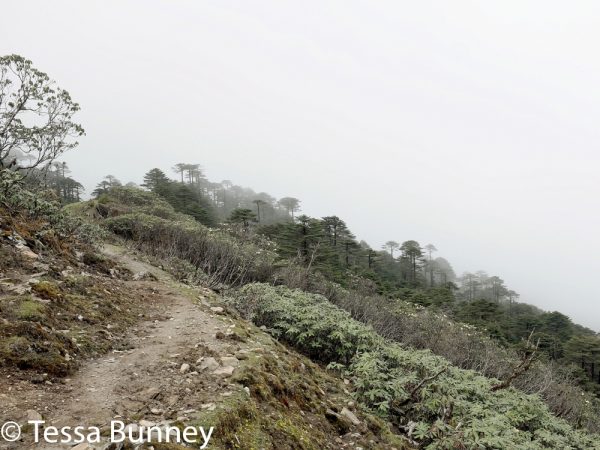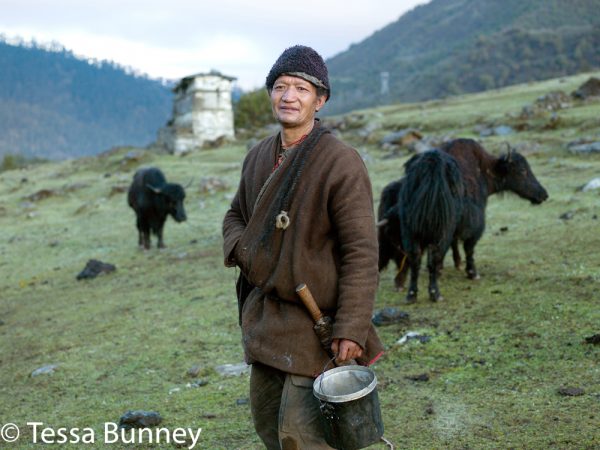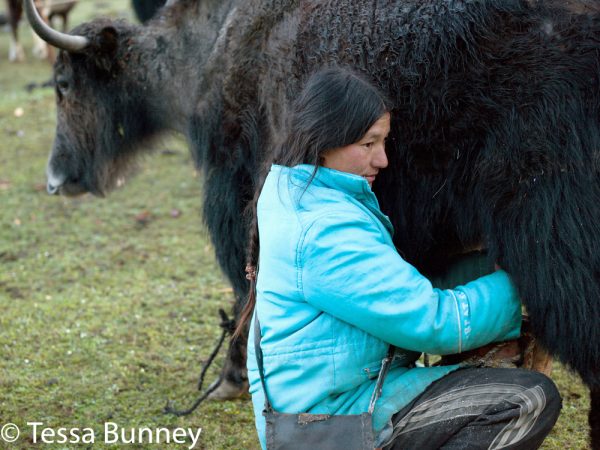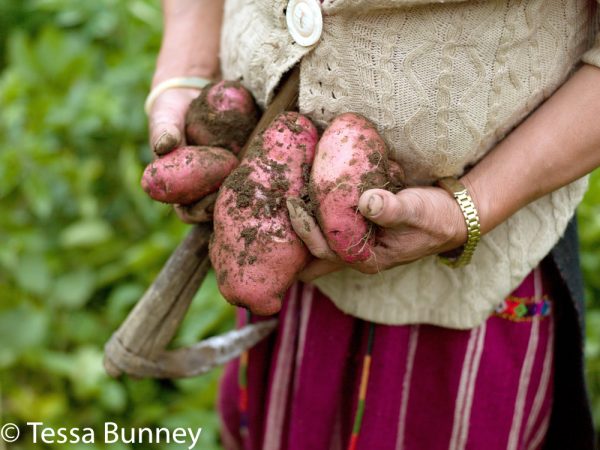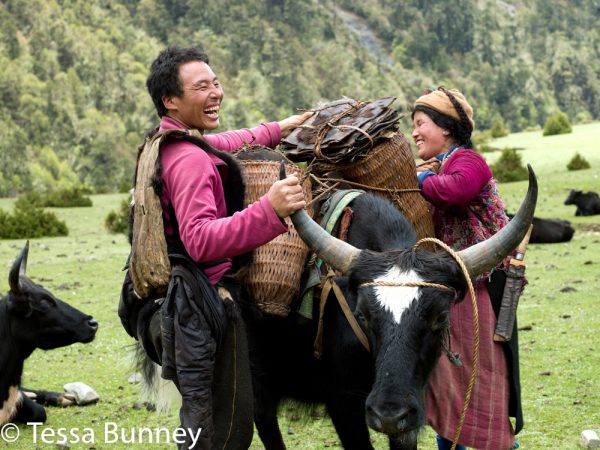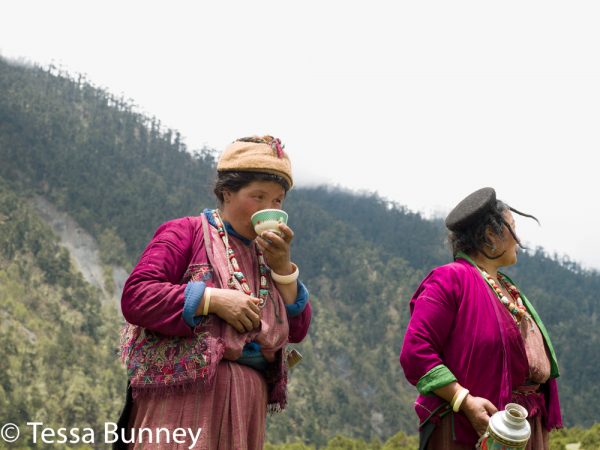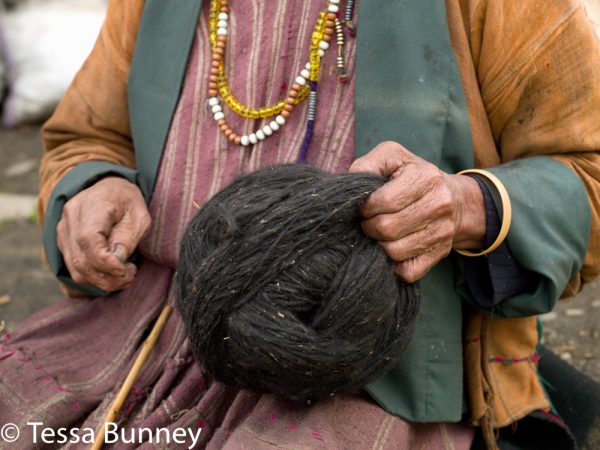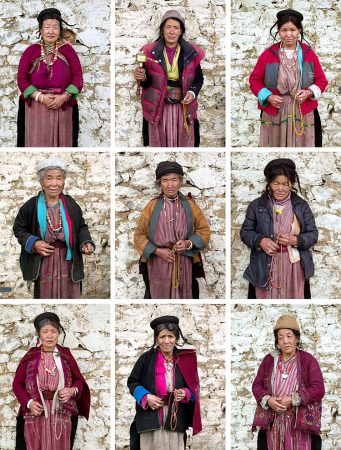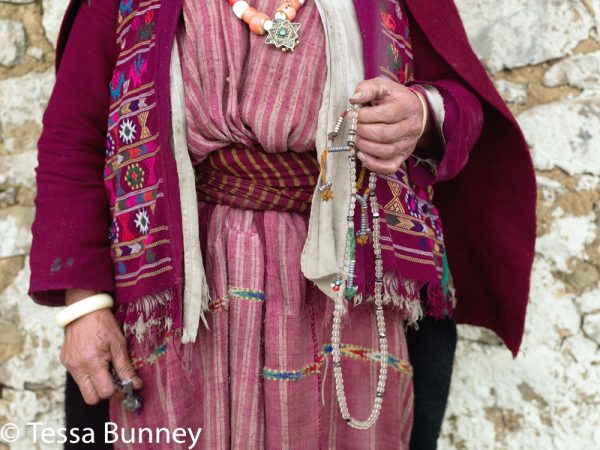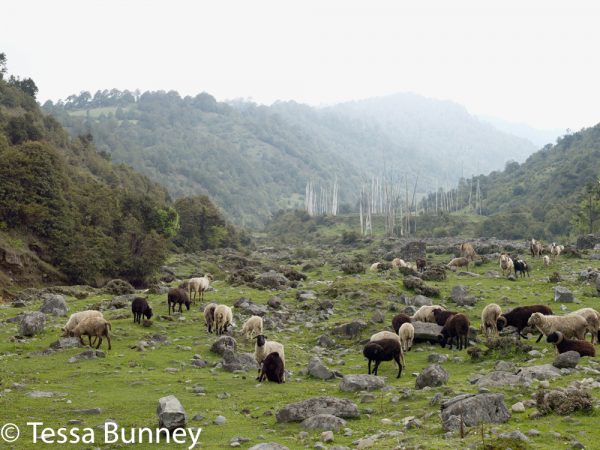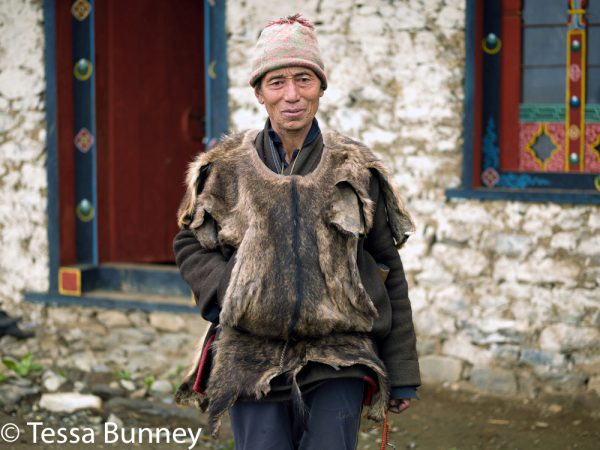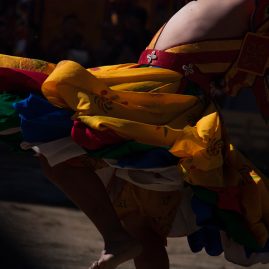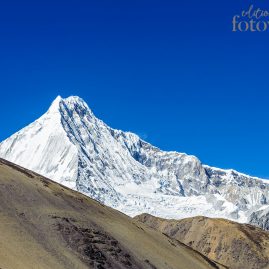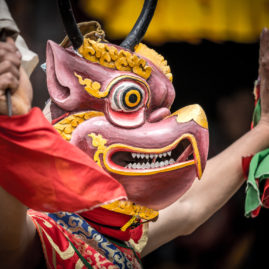Every year the road gets closer / Tessa Bunney
Bhutan, officially the Kingdom of Bhutan, is a landlocked country in South Asia located at the eastern end of the Himalayas. It is bordered to the north by China and to the south, east and west by India.
The Brokpa, the semi-nomads of the villages of Merak and Sakteng are said to have migrated to Eastern Bhutan a few centuries ago from the Tshona region of Southern Tibet. Thriving on rearing yaks and sheep, the Brokpas have maintained many of their unique traditions and customs. In summer they move to the pastures with their yaks and sheep and in winter they return to live in their houses, normally built of stones with small ventilation to protect from the piercing cold weather. As few things grow in Merak and Sakteng, the Brokpas trade their butter, cheese and yak meat with neighbouring villages for daily necessities.
Their distinctive hat known as tsipee cham is made of yak felt with long twisted tufts, said to keep the rain from running onto their faces.
Located at 3250m, the Merak valley is one of the most isolated in Bhutan but every year the road gets closer.
©Tessa Bunney, 2015
A basic road has now reached the village of Merak
About Tessa Bunney
As a photographer, Tessa has a particular interest in different landscapes and the way they are shaped by human activity. Working closely with communities and individuals, she has spent the past 25 years as a photographer, and probably her whole life, being fascinated by the intricacies of rural life. In recent years she has collaborated with North Yorkshire hill farmers, Finnish ice swimmers and Romanian nomadic shepherds for publications and exhibitions worldwide.
Her project Home Work was published by Dewi Lewis in 2010 and was exhibited and published nationally and internationally including the Land exhibition as part of the Noorderlicht Festival, 2010.
Tessa recently returned to the UK from 4 years based in Lao PDR working on her project The Corridor of Opportunity which was initially funded by Arts Council England and undertaking editorial and NGO commissions throughout the SE Asia region.
Her current project FarmerFlorist explores the vibrant local ‘artisan’ cut-flower farms which have recently sprung up in the UK and is a celebration of domestic growers past and present.
Her work draws attention to observing details which we usually let slip by unnoticed and aims to contribute to the ongoing debate about the changing nature of rural life.


